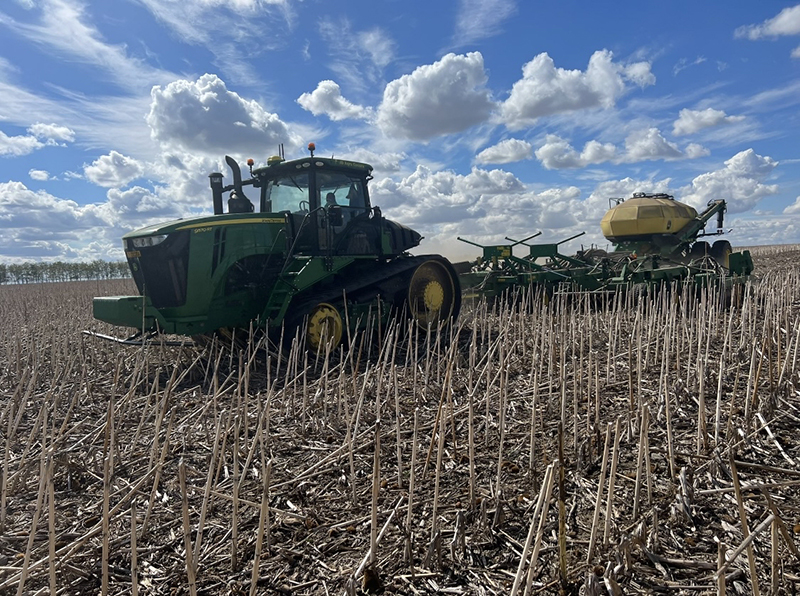by Ethan Begle, Technical Service
The more you can use your seeding equipment the faster it wears out. But that is not a bad thing! You only get one chance to get your seeding done right, and the more you need to replace and inspect your planting equipment, the better condition it will be before you head to the field. A common complaint when no-tilling more acres is spending more money replacing opener blades and wear parts. The glass is still half full though, as going to the field with new blades is ideal for cutting a furrow and placing seeds. I have been around more planters in tilled fields that are not up to spec and could improve their planting and emergence, but the planter doesn’t get rebuilt as much since there is also tillage equipment to maintain. A tilled field and a timely rain after planting can cover a lot of sins that no-tillers can’t get away with. The same comments are heard with what to plant cover crops with. Most farms have a nice planter sitting in the shed come fall that still has life left on the blades to cover acres with cover crops. Ideally you start with brand new blades each spring before planting the cash crop. The more the planter needs to be rebuilt, the more likely other parts are to be inspected like meters, gauge tires, seed firmers, frame, etc.
Air seeders are the same concept. It is not uncommon for farms to apply dry fertilizer with their air seeder to prepare for corn planting—nitrogen especially. This allows low disturbance subsurface application to reduce N loss. A larger meter roll size would be needed depending on rate, but a complete mix of N-P-K (400+ lbs) can be applied. The conveyor and tank capacity are already there, while providing more even coverage instead of broadcasting. If your average rainfall is less than 20” however, I would advise that trying to run over as little stubble as possible is critical to improving yields. This would be a better case for applying fertilizer with the planter to reduce passes over the field. Also, don’t be afraid of wider row spacing (10” wheat or 30” milo) to run down less residue. Avoid pushing stubble into contact with soil until closer to crop canopy to preserve moisture.
Spreading costs over more acres of use increases efficiency of equipment dollars. When looking at mostly fixed costs of farming (seed, fertilizer, etc.) one of the costs most under your control is what your equipment costs to use each year. Purchasing parts that last also helps the situation. The faster it wears out, the more spending extra dollars on high-wear parts makes sense for a return on that investment. This has been the focus of Exapta’s offering of wear parts. Examples would be:
- Valion Seed Tube Guards lasting 3-4x the life of OEM
- FDN Opener Blades for planters and drills, 20% longer life, 1/8” longer bevel to stay sharp for that full life of blade
- Thompson Wheels made with AR400 steel
- Hose for air seeders and planters, urethane lining that outlasts others and clear to see what’s happening inside. ID sizes 1” secondary, 1.25” CCS, and 2.5” primary
In conclusion, seeding is critical, and you have one shot at getting it done right! Make the best use of equipment dollars with longer-lasting parts. Exapta is here to help.

